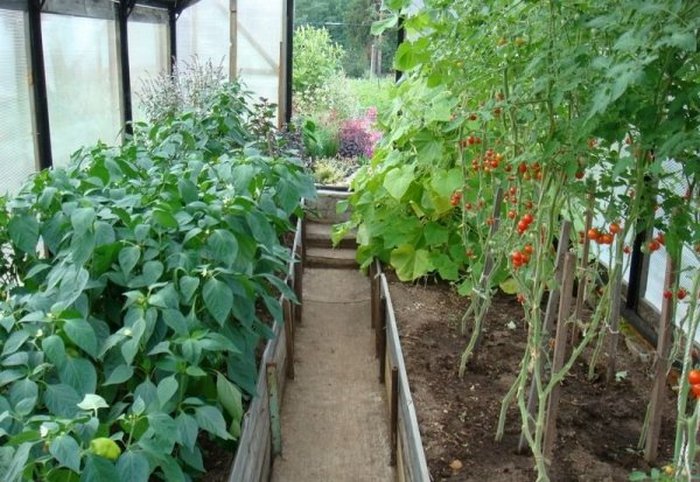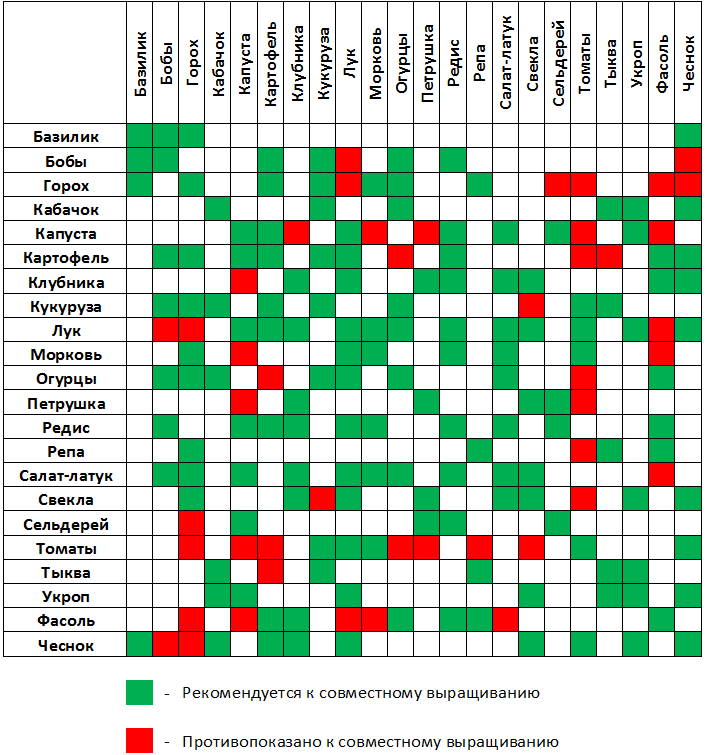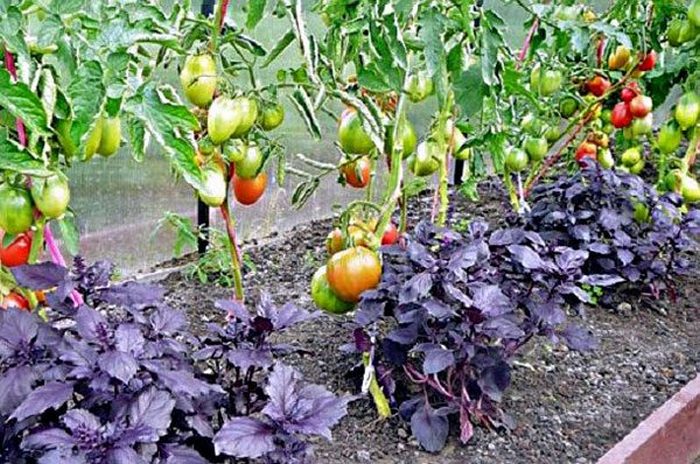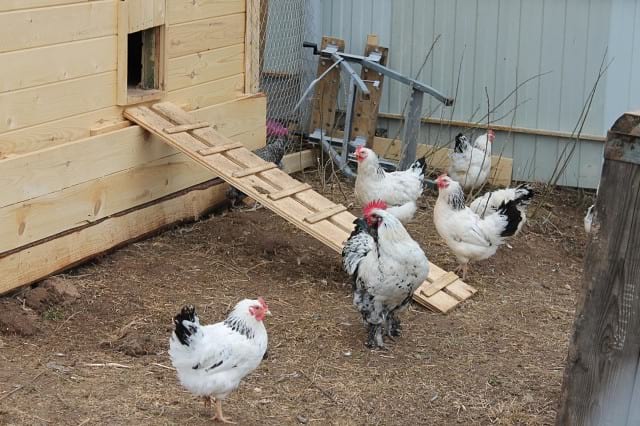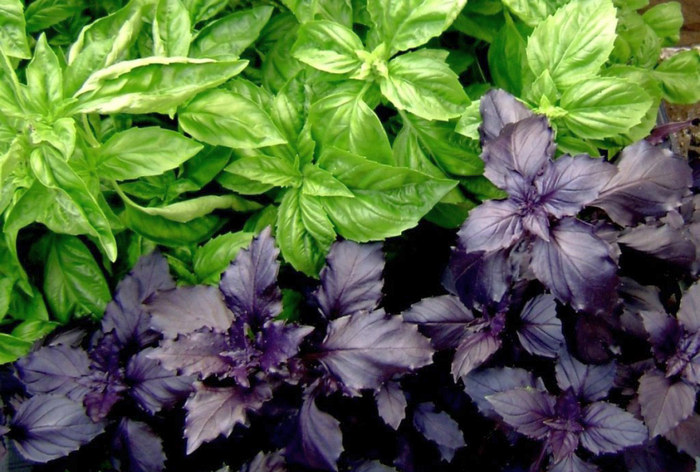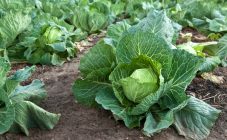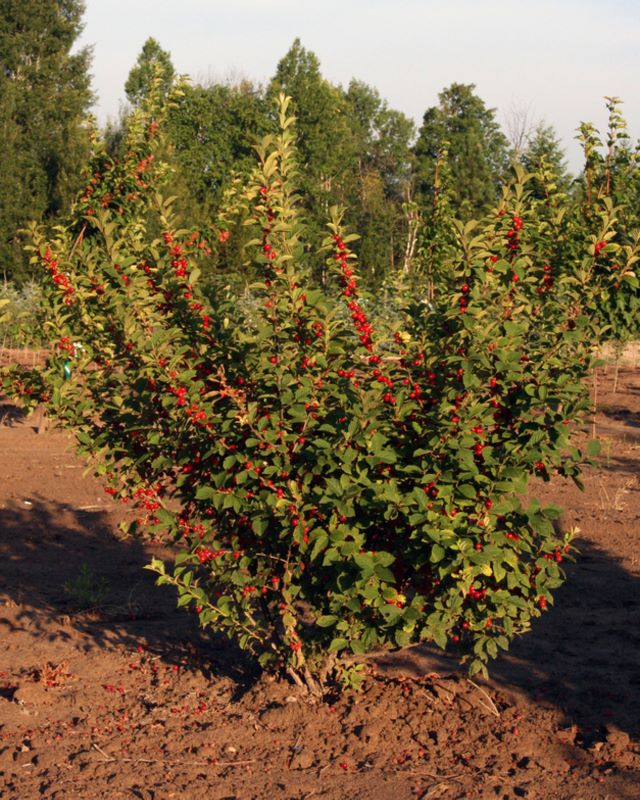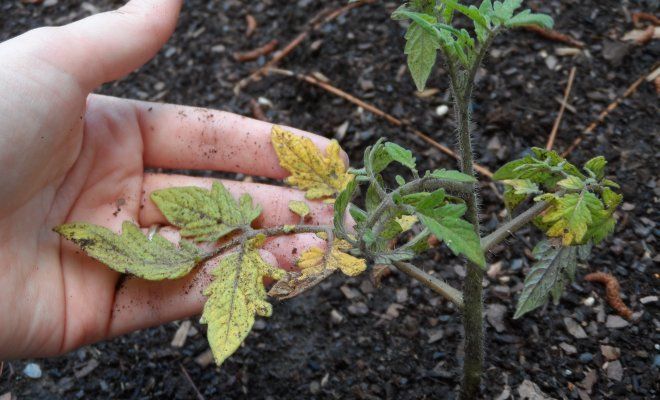Content:
- Features of growing tomatoes in a greenhouse
- Conveyor bed
- The tallest - to the center of the greenhouse
- Greenhouse - into cells
- What crops can coexist with tomatoes in a greenhouse
- Neighborhood of basil and tomatoes
- What vegetables cannot be planted with tomatoes in the same greenhouse
- Cucumbers and tomatoes in one greenhouse
The greenhouse has long been an indispensable attribute of any garden or suburban area. She reliably covers tender early seedlings of peppers, eggplants and tomatoes before planting in a permanent place. In the greenhouse, it is possible to grow several harvests of greens, to protect remontant raspberries from early autumn frosts that ruin their harvest. Any vegetable crop loved by the owners will take root in the greenhouse. But when deciding what to plant in the greenhouse with tomatoes, it is worth considering crop compatibility. Not all of them get along together.
Features of growing tomatoes in a greenhouse
Greenhouse tomatoes grown in the vicinity of other plants need their own microclimate. For plants, good lighting is preferable, but they also thrive in cloudy weather. The ambient temperature should be moderate and the room should be ventilated frequently. They need to be constantly fed with fertilizers and watered at the root. Plants with similar requirements should be planted with tomatoes.
Potassium and phosphorus-enriched fertilizing is vital for tomatoes. And an excessive nitrogen content leads to the fall of the ovaries and a decrease in the amount of the crop. Due to the frequent use of organic fertilizers, nitrates accumulate in the fruits. Tomato greenhouse neighbors should have similar requirements.
The correct choice of neighboring crops will help not only save space on the site, but also save energy, time for caring for the plants. They will not transmit the same pests and diseases, as well as depress each other. In the garden, you can even arrange some semblance of symbiosis, if you choose the right companions for the plants. It is enough to figure out how to make a conveyor bed and what to plant next to the tomatoes in the greenhouse so that the plants are comfortable.
Conveyor bed
The first step is to decide on the ripening time of both the main culture and the neighboring one. It is best to plant some plants in place of others: after the radish, you can plant tomatoes, and replace the greens with white cabbage.
The tallest - to the center of the greenhouse
It is very important to pay attention to the height of the plants, they should not shade each other. For this, three narrow beds are formed, low-growing crops are planted on the sides, and high-growing crops in the middle. In the same way, you need to plant different growth of the same type of plant.
Greenhouse - into cells
To grow many types of plants in one greenhouse, it can be divided into zones using film, polycarbonate sheets, plywood or slate.
It is equally important to choose the right material for zoning. For example, to keep the greenhouse warm in the evening, you can use sheets of dark slate, plywood or metal, as they warm up well during the day. If you need enough light in the room, it is better to use a film or polycarbonate.
What crops can coexist with tomatoes in a greenhouse
You can grow a rich harvest by choosing the right plants that are compatible with each other. In small areas, vegetables are often planted back to back. If you know perfectly how to properly organize the neighborhood of tomatoes and other vegetables, the plants will not transmit pests and diseases to each other, which will save the crop from significant losses.
It is worth considering the interests not only of tomatoes, but also of their neighbors. For example, cabbage will be less susceptible to invasion by the typical cruciferous flea beetle if its seedlings are planted next to tomatoes. Tomatoes protect turnips and onions on a feather from late blight. Experimenting with varieties and planting times leads to very interesting results. Knowing the compatibility of tomatoes with other crops in the greenhouse, it is easy to find neighbors for the plant.
Plant vegetables well next to sweet pepper and eggplant seedlings. Tomatoes can be "settled" next to:
- cabbage (white cabbage, cauliflower, broccoli or kohlrabi),
- corn,
- sunflower,
- beans,
- sweet peas,
- various types of spicy herbs,
- physalis.
Tomatoes coexist well with melons: watermelons and melons. Pest insects do not attack tomatoes if parsley (curly or regular), anise, celery and mint are nearby. Marigold flowers can be planted next to the same target.
The proximity of tomatoes and early ripening crops - onions and garlic on a feather, Chinese cabbage, radish - is an excellent solution. Vegetables do not have to fight among themselves for nutrients, because the formation of ovaries in tomatoes will begin after the early harvest. The tomato greenhouse will become a reliable shelter for any seedlings: both vegetable and flower. You can sow the material directly into the ground or in boxes placed on the floor or racks.
Endive salad, asparagus, celery, bush beans will get along well next to tomatoes. A chive bow will help keep aphids away. Therefore, all these plants can be safely planted next to tomatoes.
Neighborhood of basil and tomatoes
Basil is the best companion for tomatoes. Its neighborhood scares away horned worms and has a positive effect on the taste of the crop. Therefore, it is worth planting basil in a greenhouse with tomatoes. He also tolerates being close to tomatoes well. He only needs enough light and food.
Mixed plantings with other spicy herbs (thyme, sage, mint) are no less useful for tomatoes, they create protection for the garden from ground pests.
Many gardeners do not know what else can be planted in a greenhouse with tomatoes. For example, to improve the quality of tomato juice and increase the shelf life of the crop, you can plant borage cucumber grass nearby. Among herbs, vegetables do not tolerate only the neighborhood with lemon balm.
What vegetables cannot be planted with tomatoes in the same greenhouse
When growing tomatoes, it is imperative to control the temperature and humidity of the environment. That is why the correct choice of crops adjacent to tomatoes is very difficult - most vegetables feel uncomfortable next to tomatoes:
- frequent watering and strong humidity, which cucumbers love so much, are contraindicated for tomatoes;
- dill during its growth absorbs all the nutrients necessary for tomatoes;
- young tomato seedlings will be suppressed by fennel;
- close proximity to peas is fraught with the fact that in the process of growth it creeps up to the tomatoes, wraps around them, and deprives them of light, therefore it is better to plant peas further away.
Neighborhood with some melons and gourds, for example, pumpkins, squash and squash, is also excluded. As they grow, they fill all the free space.
Cucumbers and tomatoes in one greenhouse
With a critical lack of space on the site, cucumbers and tomatoes can be planted side by side, but this will significantly affect the quality and quantity of the crop, not for the better.
Cucumbers and tomatoes are so popular vegetables that it is impossible to imagine a human diet without them. Summer residents grow them not only for fresh consumption, but also make reserves for the winter for future use, preserving them. Most of these vegetables are grown in greenhouse conditions. If they are cultivated for sale in large quantities, you have to make a separate shelter for each. In the same room, cucumbers and tomatoes are often grown by amateur gardeners.
Cucumbers prefer a humid warm climate and do not tolerate direct sunlight on their surface. They need to be watered by sprinkling, which is categorically contraindicated for tomatoes.
If the length of the greenhouse allows, it can be delimited inside with polycarbonate, plywood or boards. In this case, you have to make exits from the greenhouse from both sides. Then airing the tomatoes will in no way harm the cucumbers. In turn, tomatoes will not suffer from excess moisture when watering cucumbers.
The list of vegetables provided in the article is not complete. It contains the most popular and well-known vegetables that can be grown by both experienced gardeners and gardeners and amateur beginners.
